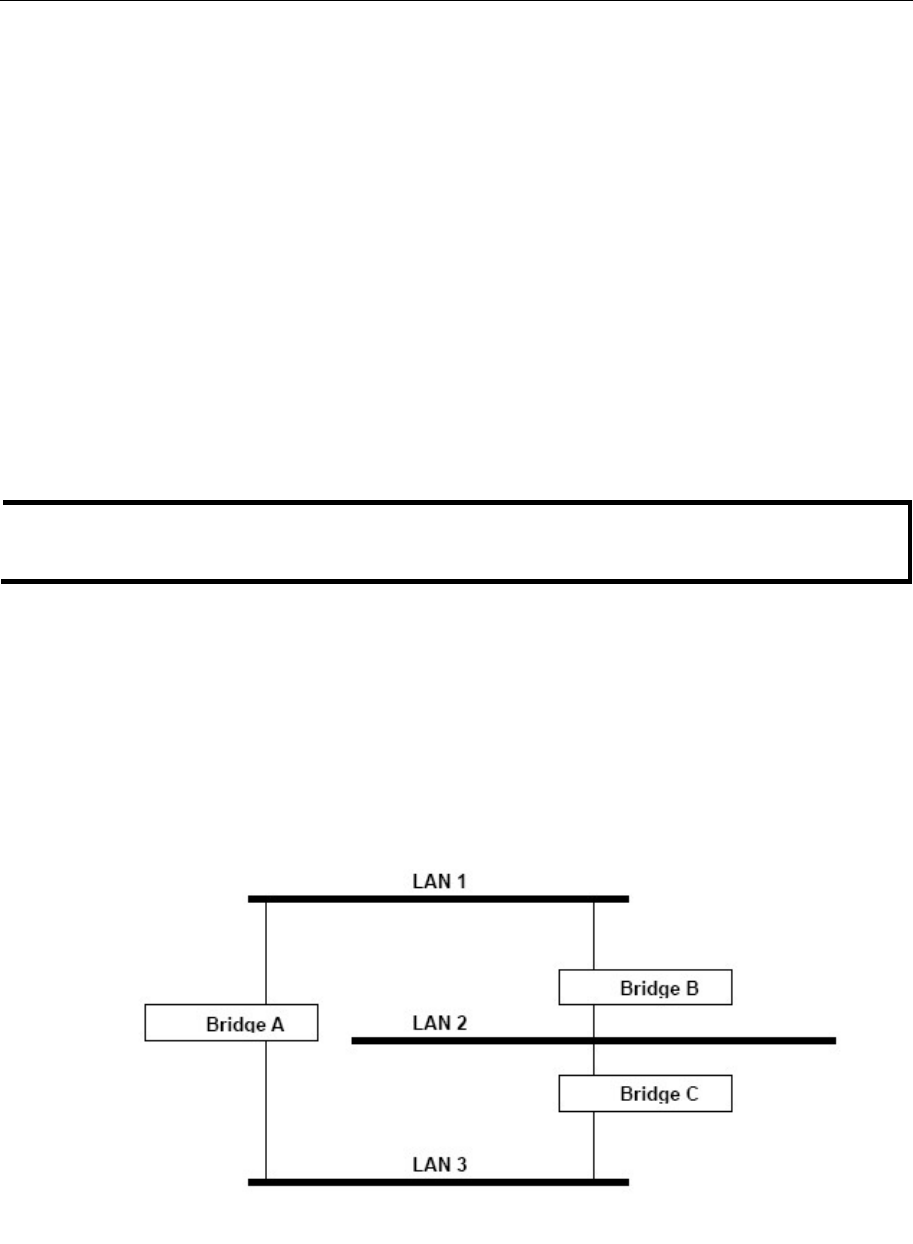
PT-7728 User’s Manual Featured Functions
3-27
The STP/RSTP Concept
Spanning Tree Protocol (STP) was designed to help reduce link failures in a network and provide
protection from loops. Networks that have a complicated architecture are prone to broadcast
storms caused by unintended loops in the network. The PT-7728’s STP feature is disabled by
default. To be completely effective, you must enable RSTP/STP on every PT-7728 connected to
your network.
Rapid Spanning Tree Protocol (RSTP) implements the Spanning Tree Algorithm and Protocol
defined by IEEE Std 802.1w-2001. RSTP provides the following benefits:
y The topology of a bridged network will be determined much more quickly compared to STP.
y RSTP is backward compatible with STP, making it relatively easy to deploy. For example:
¾ It defaults to sending 802.1D style BPDUs if packets with this format are received.
¾ STP (802.1D) and RSTP (802.1w) can operate on different ports of the same PT-7728.
This feature is particularly helpful when PT-7728 ports connect to older equipment, such
as legacy switches.
You get essentially the same functionality with RSTP and STP. To see how the two systems
different, please refer to Differences between RSTP and STP later in this chapter.
NOTE
The STP protocol is part of the IEEE Std 802.1D, 1998 Edition bridge specification. The
explanation given below uses bridge instead of switch.
What is STP?
STP (802.1D) is a bridge-based system that is used to implement parallel paths for network traffic.
STP uses a loop-detection process to:
y Locate and then disable less efficient paths (i.e., paths that have a lower bandwidth)
y Enable one of the less efficient paths if the most efficient path fails
The figure below shows a network made up of three LANs separated by three bridges. Each
segment uses at most two paths to communicate with the other segments. Since this configuration
can give rise to loops, the network will overload if STP is not enabled.


















